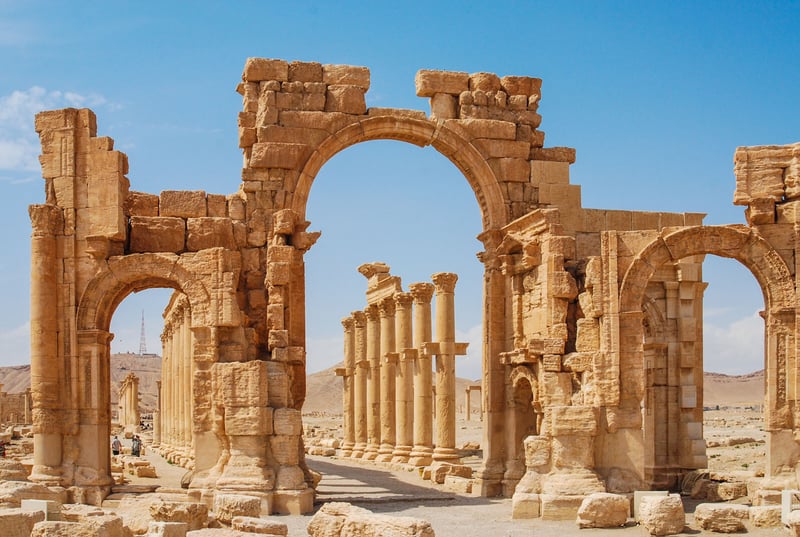Blue Shield International
SINCE 2003
? NGO
The Blue Shield is an international, voluntary organisation that was created in 1996 to try to protect cultural heritage during conflict.
#Convention
14 May 1954 – The Hague, Netherlands
Signed in the wake of the massive destruction of cultural and historical objects and monuments experienced across the globe during the Second World War, the Convention protects immovable and movable cultural heritage, including monuments of architecture, art or history, archaeological sites, works of art, manuscripts, books and other objects of artistic, historical or archaeological interest, as well as scientific collections of all kinds regardless of their origin or ownership.


This #Convention was
The UK chose not to ratify the Convention or accede to the First Protocol in 1954 as it considered that it did not provide an effective protection of cultural property. The adoption of the Second Protocol in 1999, addressed these concerns and allowed the UK to announce its intention to ratify in 2004, and did so in September 2017.
#PageMenu
John Glen MP, Parliamentary Under-Secretary of State for Arts, Heritage and Tourism, 2017 – 2018

? The #Convention summarised
The UK ratified all 3 legal instruments in September 2017, and as such benefits from their objectives in protecting the cultural property of the UK during war and armed conflict.
Wars, armed confrontations and conflict have always posed a significant threat to the safety, integrity and preservation of cultural heritage contained within the territories engaged in the conflict. These threats have manifested in destruction, whether incidental or intentional and the looting of cultural artefacts as ‘spoils of war’.
In combination, the 1954 Hague Convention and its Two Protocols encourage States to adopt measures during peacetime for the safeguarding of cultural property. The Convention also requires that the States Parties implement criminal sanctions for those who damage cultural property during times of armed conflict as well and creates a further form of protection for cultural property. The legal instruments also prohibit the export of cultural property from occupied territories and the use of cultural property as a means of reparation.
The Convention and its Two Protocols also define both movable and immovable cultural property for the purposes of protection such as monuments, religious sites, museums, libraries and archives, although the list is not exhaustive.
?️ #KeyInformation
Matthew Rabagliati
Head of Policy Communications and Research
UK National Commission for UNESCO
#Quote
Professor Peter Stone, UNESCO Chair in Cultural Property Protection and Peace at Newcastle University

? #InPicture
The Hague Convention sets out a minimum level of respect which all States Parties must observe, both in relation to their own national heritage as well as the heritage of other States Parties. The UK meets these objectives through government policy and other organisations.

The Blue Shield is an international, voluntary organisation that was created in 1996 to try to protect cultural heritage during conflict.

The British Cultural Property Protection Unit was established in September 2018 in order for the Government to fulfil its obligations under the 1954 Hague Convention.
The UK National Commission for UNESCO utilises our expert network to inform and advise government on issues relating to UNESCO’s mandate for the building of peace and the responsibilities of the UK in areas of international law governed by UNESCO.

This policy brief finds that there are no reasons stopping the UK ratifying the Convention except the need to find Parliamentary time to pass the necessary primary legislation.

The UNESCO Chair team at Newcastle tries to reduce damage to cultural property by working with the heritage, military, and humanitarian sectors to plan to conserve heritage during peacetime, as well as ensure its protection during conflict and following natural disaster.

The tectonic island of Anglesey includes more than a hundred different rock types and the oldest fossils in England or Wales with 1,800 million years of Earth’s history.

Durham’s Chair addresses the social, ethical and economic impacts facing heritage managers. The team co-design solutions and training programmes to encourage protection and inclusive promotion, particularly at living heritage sites.
[mapsvg id=”12731″]
Established in 2001, the UNESCO World Book Capital is designed to promote books, reading and a love of literature. One city is chosen per year to be the UNESCO World Book Capital.
The purpose of the Prize is to reward an activity of outstanding merit which has contributed to the freedom, independence and dignity of peoples and to the strengthening of a new international economic, social and cultural order.
Established in 2014, the Prize is awarded every two years to a person, group or international institution that has made an outstanding contribution to the development of knowledge and society through art, teaching and research in social sciences and humanities.
The purpose of the International UNESCO/José Martí Prize is to promote and reward an activity of outstanding merit in accordance with the ideals and spirit of José Martí.
The Shenzhen Design Award for Young Talents (SDAY) is an international, professional competition for young designers under 35 who are from one of the UNESCO Creative Cities worldwide.
? #AllConventions

The tectonic island of Anglesey includes more than a hundred different rock types and the oldest fossils in England or Wales with 1,800 million years of Earth’s history.

The tectonic island of Anglesey includes more than a hundred different rock types and the oldest fossils in England or Wales with 1,800 million years of Earth’s history.

The tectonic island of Anglesey includes more than a hundred different rock types and the oldest fossils in England or Wales with 1,800 million years of Earth’s history.

The tectonic island of Anglesey includes more than a hundred different rock types and the oldest fossils in England or Wales with 1,800 million years of Earth’s history.

The tectonic island of Anglesey includes more than a hundred different rock types and the oldest fossils in England or Wales with 1,800 million years of Earth’s history.

The tectonic island of Anglesey includes more than a hundred different rock types and the oldest fossils in England or Wales with 1,800 million years of Earth’s history.

The tectonic island of Anglesey includes more than a hundred different rock types and the oldest fossils in England or Wales with 1,800 million years of Earth’s history.

The tectonic island of Anglesey includes more than a hundred different rock types and the oldest fossils in England or Wales with 1,800 million years of Earth’s history.
Discover UNESCO’s #Framework in the UK
click on the links above
#Framework #StandardSetting